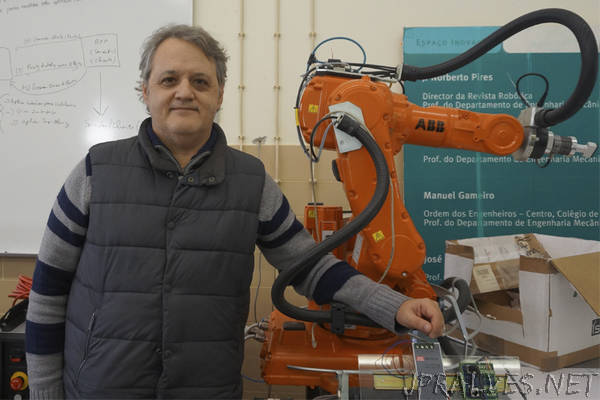
“(Translated with Google Translate)
For the first time, a team of researchers from the Faculty of Sciences and Technology of the University of Coimbra (FCTUC) and the Norwegian Technological Institute for Industry (SINTEF) developed a robotic 3D printing system with 6 axes of movement, enabling the printing of large metal parts at various angles and planes.
The technology, which has already had the interest of Indian multinational Tata Steel, one of the largest metal suppliers in the world, represents a new generation of industry-wide 3D printing using large metal materials (eg aeronautics industry and oil), with significant impacts on the reduction of production time and costs.
The great added value of this new robotic system, in addition to making it possible to double the performance of traditional 3D printers (using 3 axes), is its flexibility, allowing to couple a set of tools never before achieved, especially a software of simulation in time real.
“The ability to simulate the process in real time, that is, the simulation is done at the same time as the printing of the part, is of extreme importance, because it leads to great facilities throughout the production. Simultaneous simulation, which covers several variables and parameters (hardness, temperature, phase changes in the material, etc.), can immediately correct any anomalies that may arise. Currently, printing is performed by trial / error until the desired parameters are obtained “, clarifies Norberto Pires, project coordinator.
To obtain this robotic configuration, the researchers had to overcome several challenges. It was first necessary to see if current robotic technology was available to absorb a system of this complexity. Overcome this phase succeeded by several studies in order to find formulas “that allowed generate smoothly printing paths for a robot six-axis or more,” he explains.
Solved the problem of trajectories emerged two dilemmas: “on the one hand, to find a way to adapt the existing printing technology such a system - automation and integration technology - and on the other, able to incorporate simulation tools that would allow the real-time correction of the parameters of the printing of the pieces “, reports the also professor of the Department of Mechanical Engineering of FCTUC.
Having proved the concept, it is important to know when this solution can be on the market. It depends on the investment, which is high. The FCTUC scientist estimates a value of around two million euros. That is why it formed and leads a consortium that brings together research centers of the New University of Lisbon and several universities in Germany, Austria, Spain and Norway, as well as companies from different fields of activity. Under the consortium a project has already been submitted to the European Union.
The results of this research, funded by the PT2020 program and by pockets of ignition, were published in the scientific journal Emerald. More information about the robotic system developed is available here .”
